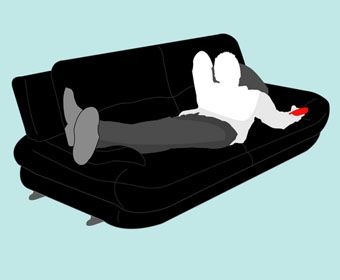Early adopters put up with a lot. They risked crippling back injuries to tote the first portable laptop computers. They paid over the odds for broadband for the pleasure of being “always on,” albeit at 512Kbps. They overlooked the many failings of numerous generations of smartphones to access the Internet on the move. So it should come as no surprise that the latest trend to sweep the telecoms and media markets should prove to be a bit of a disappointment.
February 3, 2010

By Rob Gallagher
Early adopters put up with a lot. They risked crippling back injuries to tote the first portable laptop computers. They paid over the odds for broadband for the pleasure of being “always on,” albeit at 512Kbps. They overlooked the many failings of numerous generations of smartphones to access the Internet on the move. So it should come as no surprise that the latest trend to sweep the telecoms and media markets should prove to be a bit of a disappointment.
Over-the-top TV promises to revolutionize the way TV is delivered and consumed, by allowing the content to be delivered to screens via the open Internet, rather than the closed networks of conventional cable, satellite and terrestrial operators. Some in the industry had argued that never the twain would meet. People would always use the Internet while “leaning forward” at their PCs and the TV while “leaning back” on their sofas, they said.
But the idea has caught the imaginations of players across the telecoms and media spectrum. The BBC is just one of a number of media companies around the world working on technologies to bring online video services, such as its iPlayer, to the TV. Internet firms including YouTube, Amazon and Netflix have developed versions of their PC-based video offerings specifically for the TV set. Consumer-electronics giants are brokering deals to allow users of their Internet-enabled TVs, Blu-ray players and video-game consoles to access these services.
Conventional TV operators, meanwhile, are scratching their heads, looking for ways to turn over-the-top TV into an opportunity, rather than the threat it appears to be.
But if many of today’s services are anything to go by, the operators have little to worry about now. I have access to Sky’s Sky Player live- and on-demand-TV service and Microsoft’s Zune movie-rental service via my Xbox 360 games console. And thanks to TVersity media-server software, I use the Xbox as a bridge to watch numerous PC-based video services on TV. I have also clocked up a good few hours trying out the BBC’s iPlayer on Sony’s PlayStation 3 and Nintendo’s Wii at the houses of friends who own the games consoles.
The good news is that the hardware is a lot easier to set up and use than the first products that attempted to bridge the gap between the PC-based Internet and the TV (ask anyone who spent hours wandering back and forth from their living room to their study trying to get one of the first media servers from the big-name home-router vendors to work).
But the services are far from perfect. For a start, they buffer from time to time. Now, conventional wisdom holds that ever-increasing broadband speeds will leave a generous margin of error for over-the-top services. Indeed, most providers recommend a minimum connection speed of 2Mbps to access their standard-definition services, and mine regularly tests at 10Mbps.
The problem with over-the-top services is that it’s hard to tell where the fault lies. Take Sky Player. The content comes from Sky, but the service is integrated into Microsoft’s Xbox Live online gaming service, both of which rely on my broadband connection’s working to a reasonable standard.
I’ve had various problems with Sky Player, starting with its launch. I took out a paid subscription on day one yet couldn’t access the service until a few days later. Since then, Sky Player has periodically dropped off the Xbox Live dashboard, and when it is available, the video streams regularly buffer.
Sky said that the problem with the launch was caused by its failure to anticipate demand and provide enough capacity. As to the other problems, I have no idea. My desire to watch over-the-top TV was not so great that I thought about phoning up Sky, Microsoft and Virgin Media to find out. I simply switched off the Xbox and turned over to terrestrial.
Who knows? The fault could have something to do with flaky in-home wiring or my ailing router. My point is that over-the-top TV services will have many more points of failure than just the availability of bandwidth. People might be willing to “lean forward” and fix problems with their PC-based video services. But with TV, the temptation to “lean back” and change the channel will prove much stronger, even for long-suffering early adopters.
Read more about:
DiscussionYou May Also Like






.png?width=300&auto=webp&quality=80&disable=upscale)


_1.jpg?width=300&auto=webp&quality=80&disable=upscale)


.png?width=800&auto=webp&quality=80&disable=upscale)